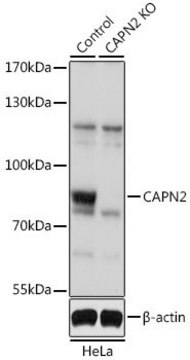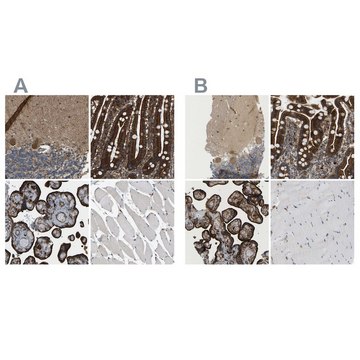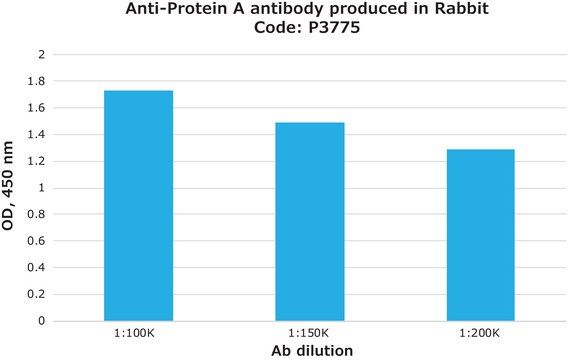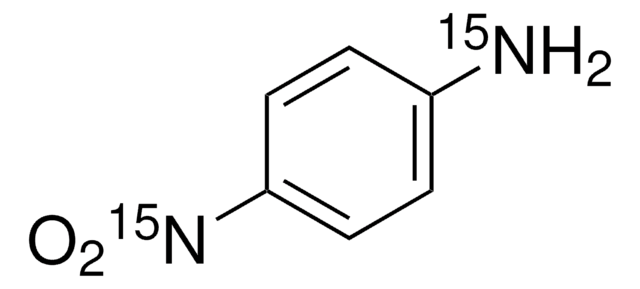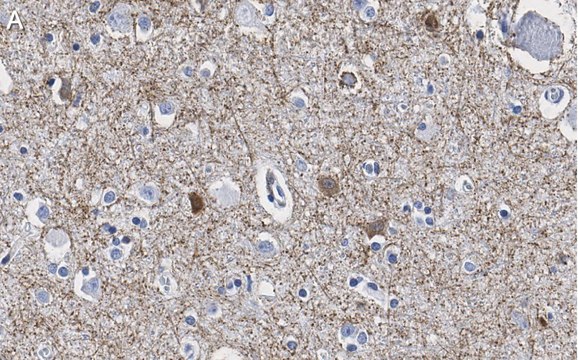C3989
Anti-Calpain-2, Large Subunit antibody produced in rabbit
1 mg/mL, affinity isolated antibody, buffered aqueous glycerol solution
Sign Into View Organizational & Contract Pricing
All Photos(1)
About This Item
MDL number:
UNSPSC Code:
12352203
Recommended Products
biological source
rabbit
conjugate
unconjugated
antibody form
affinity isolated antibody
antibody product type
primary antibodies
clone
polyclonal
form
buffered aqueous glycerol solution
species reactivity
rat, human, mouse
concentration
1 mg/mL
technique(s)
western blot: 1:1,000
UniProt accession no.
shipped in
wet ice
storage temp.
−20°C
target post-translational modification
unmodified
Gene Information
human ... CAPN2(824)
mouse ... Capn2(12334)
rat ... Capn2(29154)
General description
Calpains are calcium-dependent cysteine proteases that are expressed ubiquitously in eukaryotes. Calpains regulate diverse cellular processes such as development, apoptosis and signal transduction . Calpain-2 has been implicated in the development of synaptic plasticity and cataract . Anti-Calpain-2 is specific for the large subunit of calpain-2 in humans, mice and rats. The antibody does not bind to other members of the calpain protein family.
Immunogen
synthetic peptide corresponding to the large subunit of human calpain II (m-calpain, Clpn02, calpain-2).
Application
Anti-Calpain-2, Large Subunit antibody is suitable for use in western blot (1:1000) and immunoblot (80kDa and 58kDa).
Applications in which this antibody has been used successfully, and the associated peer-reviewed papers, are given below.
Western Blotting (1 paper)
Western Blotting (1 paper)
Physical form
Solution in phosphate buffered saline containing 50% glycerol, 1% bovine serum albumin, and 0.02% sodium azide.
Disclaimer
Unless otherwise stated in our catalog or other company documentation accompanying the product(s), our products are intended for research use only and are not to be used for any other purpose, which includes but is not limited to, unauthorized commercial uses, in vitro diagnostic uses, ex vivo or in vivo therapeutic uses or any type of consumption or application to humans or animals.
Not finding the right product?
Try our Product Selector Tool.
Regulatory Information
含少量动物源组分生物产品
常规特殊物品
Choose from one of the most recent versions:
Already Own This Product?
Find documentation for the products that you have recently purchased in the Document Library.
Ana I Arroba et al.
Molecular vision, 22, 1522-1531 (2017-01-05)
Many cellular and molecular studies in experimental animals and early retinal function tests in patients with diabetic retinopathy (DR) have shown that retinal neurodegeneration is an early event in the pathogenesis of the disease. Somatostatin (SST) is one of the
Dorothy E Croall et al.
Genome biology, 8(6), 218-218 (2007-07-05)
The calpain family is named for the calcium dependence of the papain-like, thiol protease activity of the well-studied ubiquitous vertebrate enzymes calpain-1 (mu-calpain) and calpain-2 (m-calpain). Proteins showing sequence relatedness to the catalytic core domains of these enzymes are included
Sohila Zadran et al.
Molecular neurobiology, 42(2), 143-150 (2010-10-07)
The family of calcium-dependent neutral proteases, calpains, was discovered more than 30 years ago, but their functional roles in the nervous system under physiological or pathological conditions still remain unclear. Although calpain was proposed to participate in synaptic plasticity and
Suman Biswas et al.
Medical science monitor : international medical journal of experimental and clinical research, 11(9), RA301-RA310 (2005-08-30)
Globally, cataract accounts for the majority of cases of treatable blindness and the lens opacification associated with cataract is primarily due to the insolubilisation of crystallins, proteins essential for the transparency of the lens. Recent studies have suggested that a
Ana I Arroba et al.
The European journal of neuroscience, 30(6), 975-986 (2009-09-03)
Retinitis pigmentosa is a heterogeneous group of inherited retinal dystrophies in which the loss of photoreceptor cells via apoptosis leads to blindness. In this study we have experimentally mimicked this condition by treating 661W cells and wild-type mouse retinal explants
Our team of scientists has experience in all areas of research including Life Science, Material Science, Chemical Synthesis, Chromatography, Analytical and many others.
Contact Technical Service



